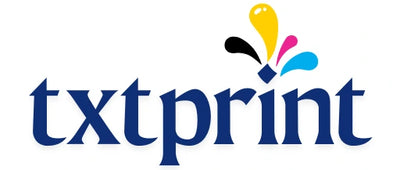Choosing the right printing method can make or break your budget as a small business. With options like Direct-to-Film (DTF) and screen printing, how do you decide which is more cost-effective? In this guide, we’ll break down the costs, pros, and cons of each method to help you maximize savings without sacrificing quality.
What Are DTF and Screen Printing?
1. Direct-to-Film (DTF) Printing
DTF involves printing designs onto a special film, which is then transferred to fabric using heat and adhesive powder. It’s ideal for small batches and complex designs.
Best For:
-
Small orders (1–100 units)
-
Full-color or photorealistic designs
-
Mixed fabric types (cotton, polyester, blends)
🔗 Explore TxTPrint’s DTF Services
2. Screen Printing
Screen printing uses stencils (screens) to layer ink onto fabric. It’s a classic method favored for large orders and bold, simple designs.
Best For:
-
Bulk orders (50+ units)
-
Solid colors and simple graphics
-
Cotton or cotton-blend apparel
🔗 Learn About TxTPrint's Screen Printing
Cost Comparison: DTF vs. Screen Printing
1. Setup Costs
-
DTF: $0 setup fees for most orders. Perfect for small businesses testing designs.
-
Screen Printing: 100+ per design for screen creation. Costly for multiple colors or designs.
Verdict: DTF wins for startups and small batches.
2. Per-Unit Indicative Costs
| Order Size | DTF Cost/Shirt | Screen Printing Cost/Shirt |
|---|---|---|
| 25 units | $8.50 | $12.00 |
| 100 units | $5.20 | $6.50 |
| 500 units | $3.80 | $3.20 |
Takeaway:
-
Under 100 units: DTF is cheaper.
-
Over 200 units: Screen printing saves more.
3. Hidden Costs
-
DTF: Minimal waste, no screen storage fees.
-
Screen Printing: Screens require storage (20/month per design).
Key Factors Impacting Your Decision
1. Order Size
-
DTF: No minimums. Great for testing new designs.
-
Screen Printing: Economical at 50+ units.
2. Design Complexity
-
DTF: Handles gradients, photos, and intricate details effortlessly.
-
Screen Printing: Limited to simpler designs with fewer colors.
3. Turnaround Time
-
DTF: 3–5 days (no setup).
-
Screen Printing: 7–14 days (screen drying + setup).
4. Durability
-
DTF: Lasts 50+ washes (gentle cycle recommended).
-
Screen Printing: 75+ washes (more durable for heavy use).
Real-World Case Study: How a Small Business Saved 40%
AWESIZE, a startup selling graphic tees, switched from screen printing to DTF for their initial 50-unit run. Results:
-
Savings: Reduced costs from $7/shirt.
-
Flexibility: Tested 10 designs risk-free.
-
Speed: Launched their collection 10 days faster.
Environmental Impact
-
DTF: Uses water-based adhesives; less chemical waste.
-
Screen Printing: Higher water/ink waste; eco-friendly inks cost 20% more.
🔗 External Link: Sustainable Apparel Alliance Report
Which Method Should You Choose?
| Scenario | Recommended Method |
|---|---|
| Testing a new design | DTF |
| Bulk orders (200+ units) | Screen Printing |
| Mixed fabrics/blends | DTF |
| Bold logos on cotton tees | Screen Printing |
Final Tips to Maximize Savings
-
Mix Methods: Use DTF for small runs and screen printing for bulk.
-
Negotiate Bulk Rates: Ask about discounts for 100+ units.
-
Optimize Designs: Simplify colors for screen printing.




